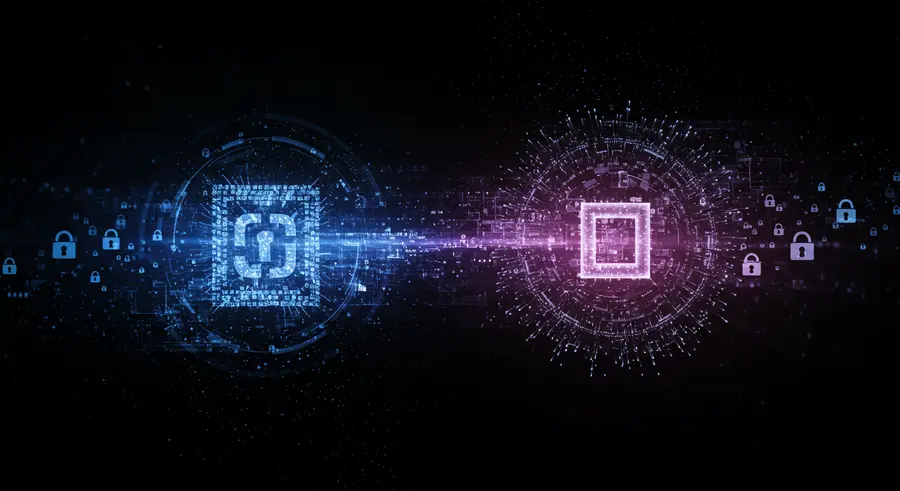Quantum Computing: A New Frontier for Passwordless Authentication
The dawn of quantum computing promises unprecedented computational power, but it also casts a long shadow over current cybersecurity practices, including passwordless authentication systems.

The Quantum Revolution and Its Cryptographic Implications
Quantum computers, harnessing the principles of quantum mechanics like superposition and entanglement, operate fundamentally differently from classical computers. While still in their developmental stages for widespread use, their potential to solve certain complex problems exponentially faster than classical computers is a game-changer. One such area is cryptography.
Many of today's widely used cryptographic algorithms, which protect everything from financial transactions to sensitive data and form the backbone of secure authentication, rely on the difficulty of solving mathematical problems like factoring large numbers (RSA) or computing discrete logarithms (Elliptic Curve Cryptography - ECC). Shor's algorithm, a quantum algorithm, can solve these problems efficiently, rendering much of our current public-key cryptography insecure once large-scale, fault-tolerant quantum computers become a reality.
Passwordless Authentication in a Quantum World
Passwordless authentication methods, such as FIDO2/WebAuthn, Passkeys, biometrics, and magic links, aim to enhance security and user experience by moving away from traditional passwords. However, these systems often rely on underlying cryptographic primitives for key exchange, digital signatures, and secure storage. For example, FIDO2 authenticators typically use public-key cryptography (often ECC) to sign authentication challenges.
If the underlying cryptography is broken by quantum computers, the security of these passwordless systems could be compromised. An attacker with a powerful quantum computer could potentially:
- Derive private keys from public keys, allowing them to impersonate users or servers.
- Forge digital signatures, undermining the integrity of authentication processes.
- Decrypt sensitive data protected by now-vulnerable algorithms.
The Rise of Quantum-Resistant Cryptography (QRC)
To address this looming threat, the field of Post-Quantum Cryptography (PQC), also known as Quantum-Resistant Cryptography (QRC), is rapidly evolving. The goal of PQC is to develop new cryptographic algorithms that are secure against attacks from both classical and quantum computers. These algorithms are based on different mathematical problems believed to be hard for quantum computers to solve. Some of the main families of PQC algorithms include:
- Lattice-based cryptography: Relies on the difficulty of problems related to geometric structures called lattices.
- Code-based cryptography: Based on error-correcting codes.
- Hash-based signatures: Uses cryptographic hash functions to create digital signatures. These are well-understood but can have limitations like statefulness or larger signature sizes.
- Multivariate cryptography: Involves solving systems of multivariate polynomial equations.
- Isogeny-based cryptography: Utilizes mappings between elliptic curves.
The National Institute of Standards and Technology (NIST) in the U.S. has been leading a global effort to standardize PQC algorithms, with several candidates already selected for standardization and others under consideration.
Integrating QRC into Passwordless Authentication
The future of secure passwordless authentication in the quantum era hinges on the successful integration of QRC. This transition will be a significant undertaking and will involve:
- Updating Standards: Authentication standards like FIDO2/WebAuthn will need to incorporate PQC algorithms for key generation, signatures, and attestations.
- Hardware and Software Upgrades: Authenticators (like security keys and platform authenticators) will need new firmware and potentially new hardware to support PQC. Servers and relying parties will need to update their software libraries and infrastructure.
- Performance Considerations: Some PQC algorithms may have different performance characteristics (e.g., larger key sizes, slower operations) compared to classical algorithms. These need to be carefully evaluated for user experience in passwordless systems.
- Crypto-agility: Systems should be designed to be "crypto-agile," meaning they can easily switch between different cryptographic algorithms as new standards emerge or vulnerabilities are discovered. This is crucial during the transition period.
Emerging concepts like "quantum-safe Passkeys" or next-generation FIDO standards will likely feature these QRC primitives at their core, ensuring that the convenience and security benefits of passwordless authentication are preserved in a post-quantum world.
Preparing for the Quantum Shift: A Hybrid Approach
While the timeline for when large-scale quantum computers will be available to break current crypto is uncertain (often referred to as "Y2Q" or "Q-Day"), the principle of "harvest now, decrypt later" means that sensitive, long-lived data encrypted today could be captured and decrypted in the future. Therefore, preparations must begin now.
Organizations should:
- Inventory Cryptographic Assets: Understand where and how classical cryptography is used within their systems, especially in authentication mechanisms.
- Monitor PQC Standardization: Stay informed about developments from NIST and other relevant bodies.
- Plan for Transition: Develop a roadmap for migrating to PQC, considering a hybrid approach where both classical and PQC algorithms are used during the transition (e.g., signing with both an ECC and a PQC key).
- Engage with Vendors: Inquire about vendors' PQC roadmaps for hardware security modules (HSMs), identity providers, and authentication solutions.
Conclusion: Navigating the Quantum Future of Authentication
Quantum computing presents both a monumental challenge and an exciting opportunity for cybersecurity. For passwordless authentication to truly fulfill its promise of a more secure digital future, it must evolve to become quantum-resistant. The transition to PQC will be complex and will require concerted effort from researchers, standards bodies, developers, and organizations. By embracing crypto-agility and proactively planning for this shift, we can ensure that our authentication systems remain robust and trustworthy, even in the face of the quantum revolution. The journey towards a quantum-safe, passwordless future is just beginning.